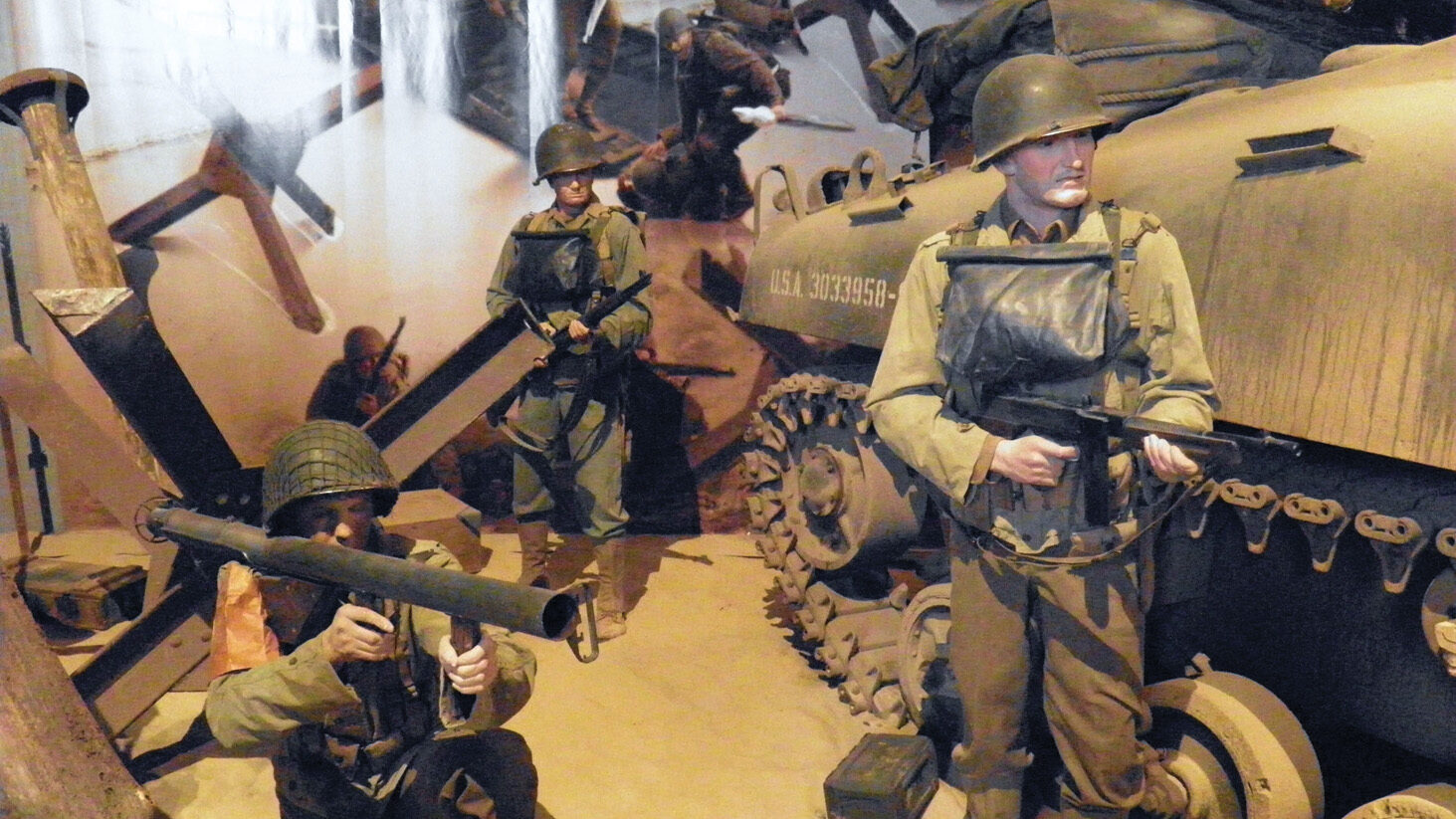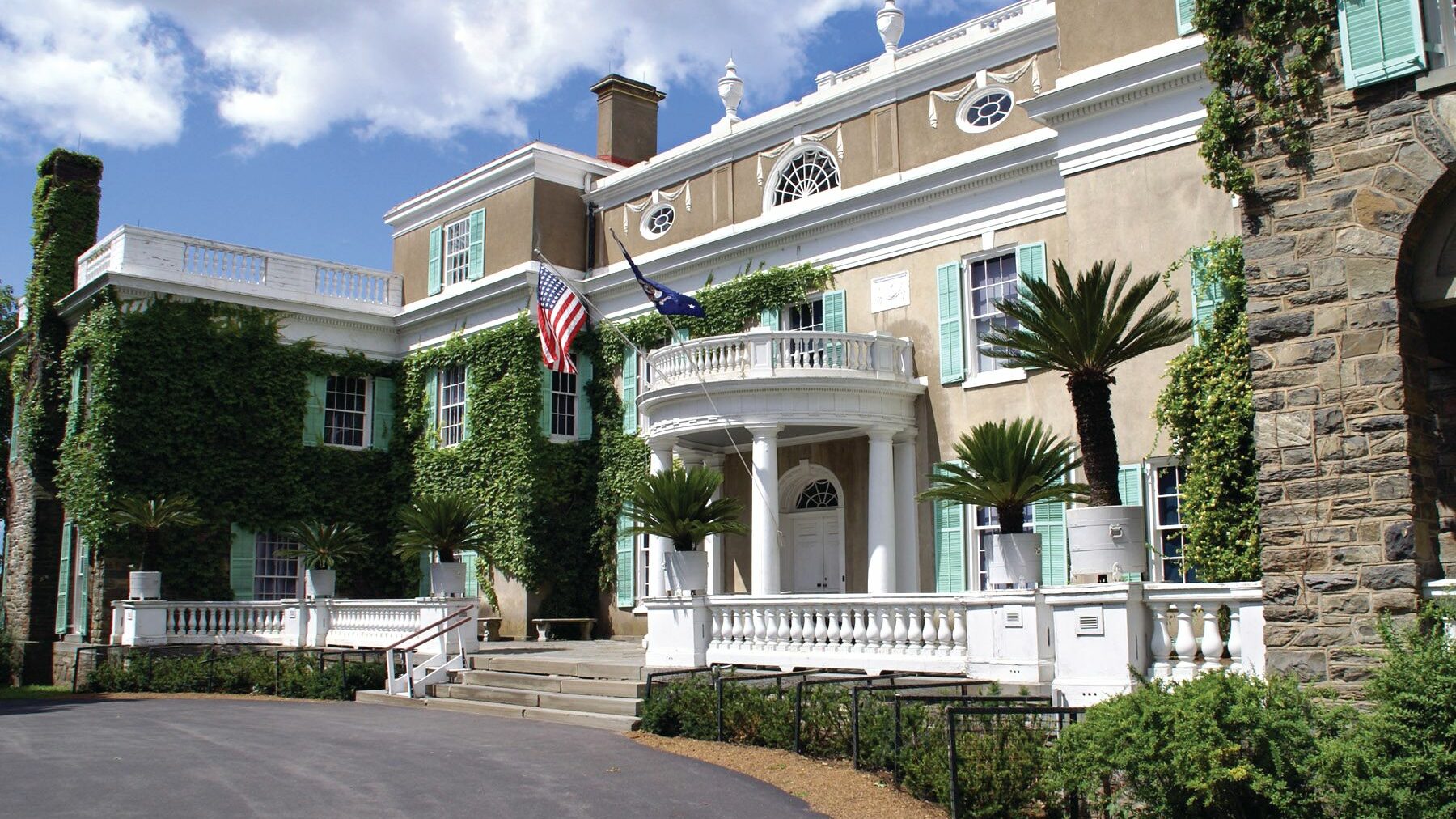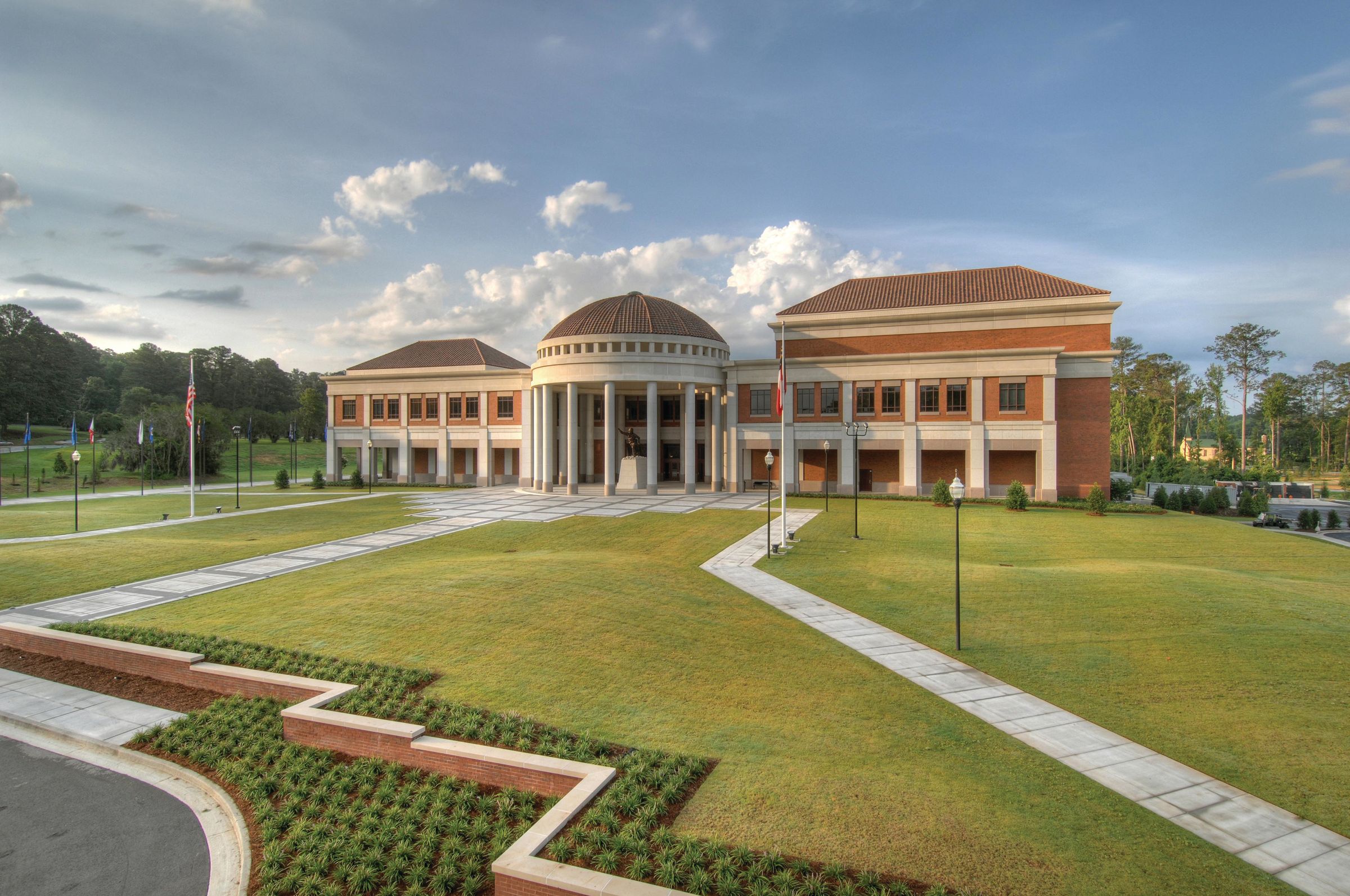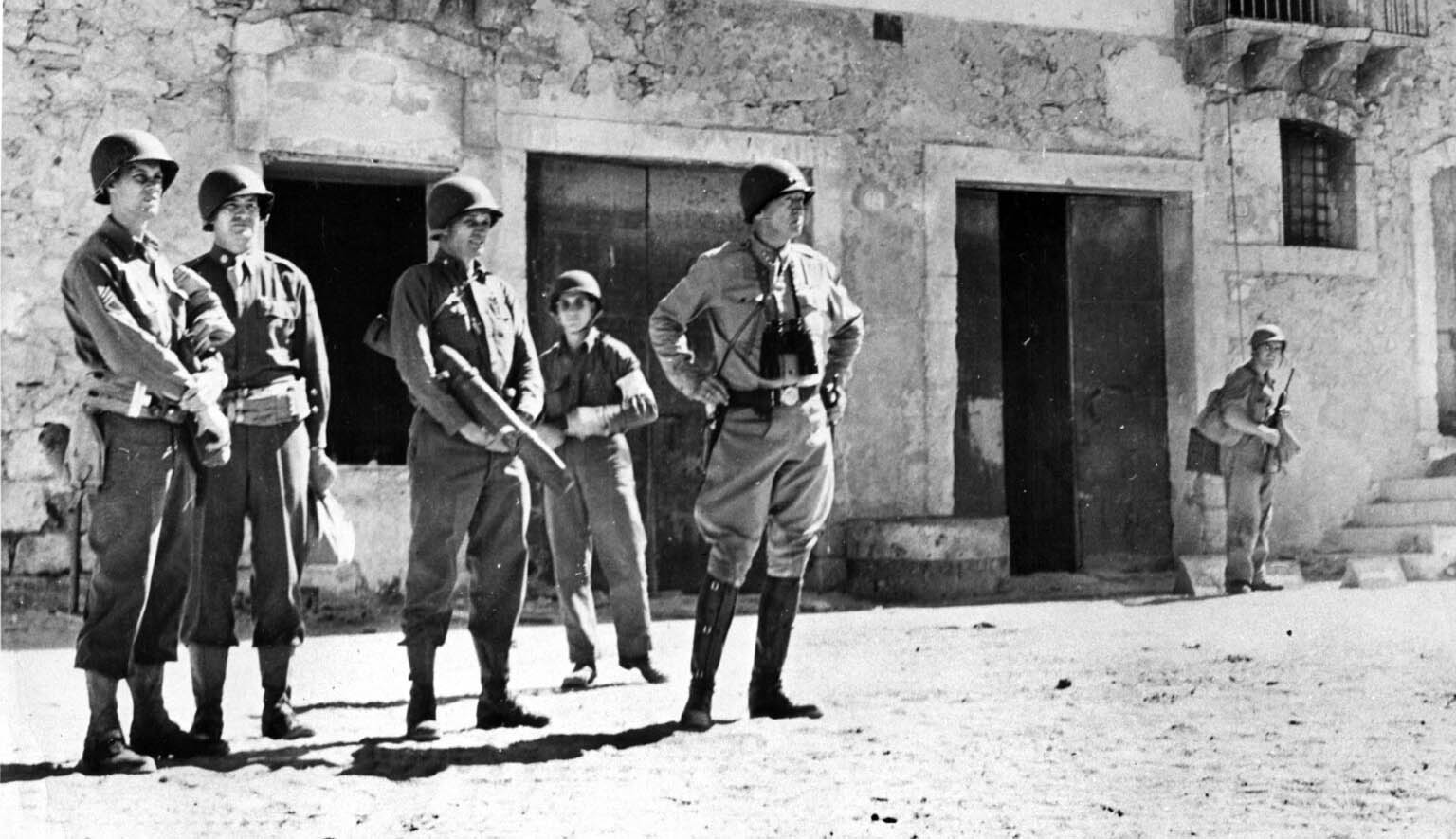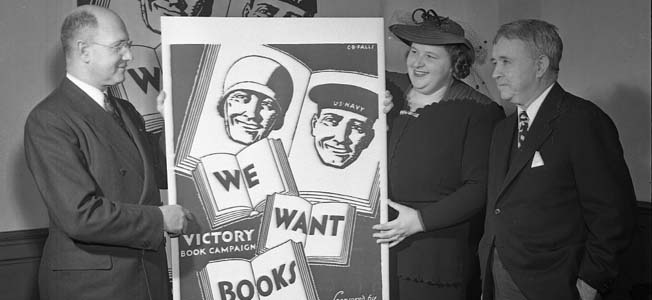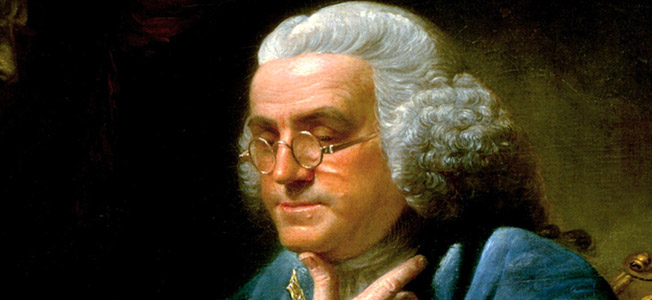By William E. Welsh
An armada of U.S. Air Force strike aircraft roared through the sky toward the North Vietnamese ammunition storage depot at Xom Bang, 10 miles north of the DMZ, on March 2, 1965. More than two dozen F-105 Thunderchiefs and F-100 Super Sabres arrived first to suppress the enemy air defenses. They fired clusters of rockets and Gatling-style miniguns against the AAA batteries. Startled guards fired their AK-47s into the air while crews of 12.7mm, 37mm, and 57mm antiaircraft artillery scrambled to their guns, determined to down the incoming aircraft.
Sweeping in behind them came 25 F-105s and 20 B-57 Canberras. They saturated the sprawling ammunition dump with 250-pound bombs, 500-pound bombs, and cluster bombs, which sprayed the area with steel pellets. After releasing their munitions at just under 10,000 feet, the Thud pilots exited the target area at supersonic speed climbing rapidly to 24,000 feet to escape the AAA fire.
The F-105s and some of the F-100s had flown from the Korat and Takhli air bases in Thailand, while the remaining F-100s and the B-57s flew from Da Nang and Tan Son Nhut in South Vietnam. Based on an aerial reconnaissance afterwards, Air Force officials reported that three-quarters of the 49 buildings on the site had been obliterated. On the same day, South Vietnamese airmen successfully bombed the North Vietnamese naval base at Quang Khe, 65 miles north of the DMZ. Six aircraft were lost on the two strikes.
The Xom Bang strike constituted the first time that U.S. aircraft had operated alone against a North Vietnamese target without the inclusion of South Vietnamese aircraft. The two strikes marked the beginning of Operation Rolling Thunder.
U.S. pilots had been flying ground-support missions in Southeast Asia since 1962 in support of South Vietnamese forces. Three days after the Gulf of Tonkin incident of August 2, 1964, in which the destroyers Maddox and Turner Joy engaged North Vietnamese torpedo boats, attack aircraft from the carriers Ticonderoga and Constellation retaliated by flying 64 sorties against four enemy torpedo bases as part of Operation Pierce Arrow. A-1 Skyraider Pilot Lieutenant Richard Sather lost his life when his plane was shot down, and A-4 Skyhawk Pilot Lieutenant Lt. Everett Alvarez became the first downed U.S. pilot to be held as a prisoner of war in North Vietnam.
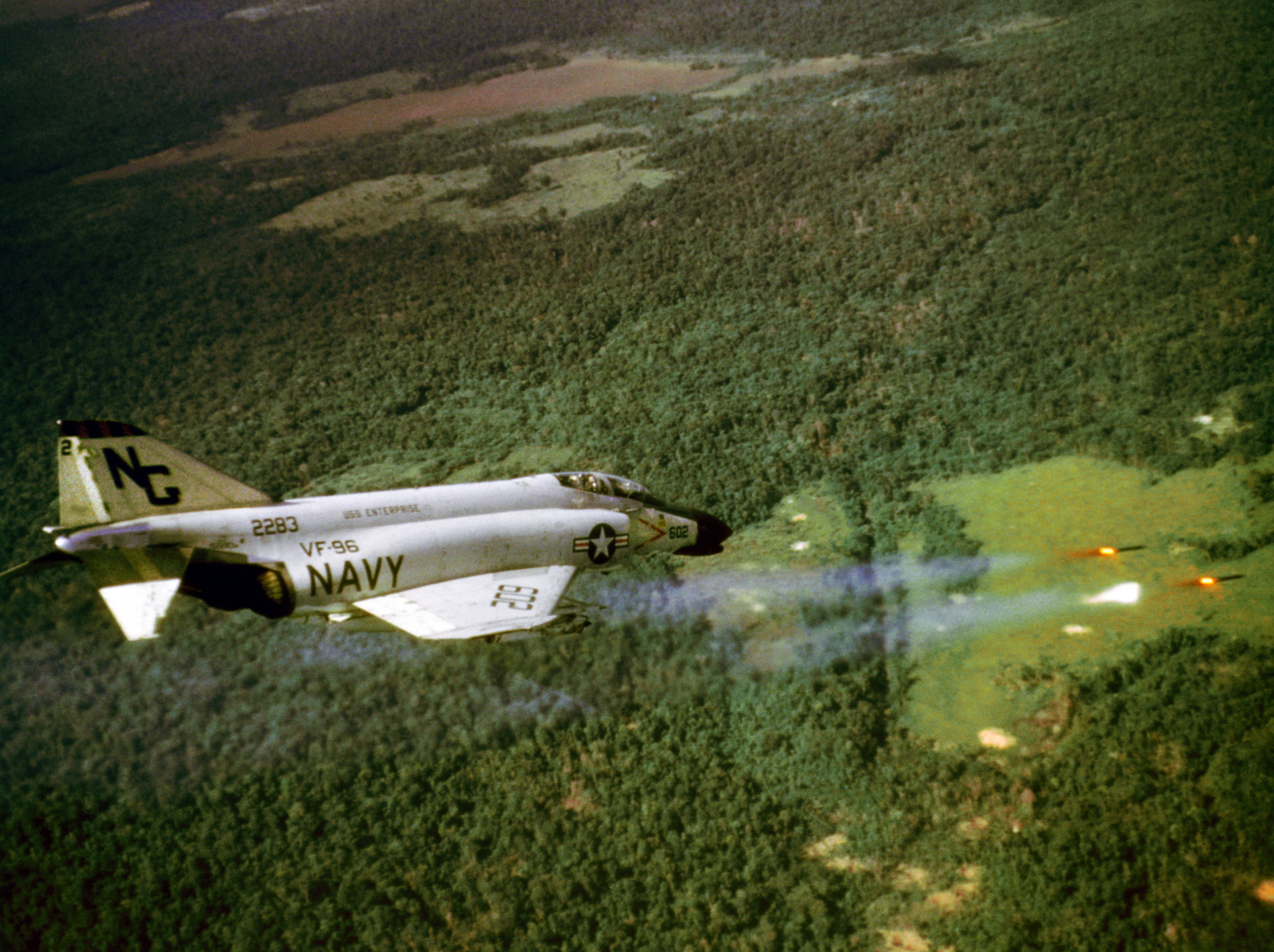
In spring 1964 the U.S. Joint Chiefs of Staff, which was led by Army General Earle Wheeler, established a working group to compile a list of targets in North Vietnam for a strategic air offensive to cripple the communist country’s ability to support the guerilla insurgency in South Vietnam. The working group evaluated 451 potential targets, which it narrowed to a preliminary list of 99 targets.
The targets were divided into three categories. The first category contained 30 military targets that the group believed would bring about an immediate reduction in North Vietnam’s ability to support Viet Cong forces in South Vietnam. These were airfields; road networks; military barracks and headquarters; and ammunition and supply dumps.
The military targets on the list were mostly located along North Vietnam’s frontier with Laos. A second category consisted of 61 other targets deeper inside North Vietnam, and a third category was made up of eight major factories and industrial plants that supported the communist war effort. The JCS submitted the list, which it narrowed to 94 targets, to Secretary of Defense Robert McNamara on August 24, 1964.
Air Force and Navy aircraft soon began operating from airfields in South Vietnam. As the U.S. Air Force and Navy built up their air assets in the region following the Gulf of Tonkin incident, the Air Force began basing large numbers of fighter-bombers in Thailand at the allied country’s royal airbases. As for the U.S. Navy, it had three carriers operating in the Gulf of Tonkin by spring 1965.
Following a major Viet Cong attack on a U.S. helicopter base at Pleiku in the Central Highlands of South Vietnam on February 7, 1965, the Air Force and Navy received orders to conducted retaliatory air strikes above the DMZ. The two sets of airstrikes were designated Operation Flaming Dart; on February 7, U.S. and South Vietnamese aircraft carried out 49 sorties as part of an operation codenamed Flaming Dart I.
When the Viet Cong subsequently bombed a U.S. enlisted personnel billet in Qui Nhon on February 11, which killed 23 individuals, the U.S. Navy received orders to conduct another retaliatory attack under Flaming Dart II. Carrier-based aircraft from the Ranger, Hancock, and Coral Sea struck North Vietnamese targets on February 11.
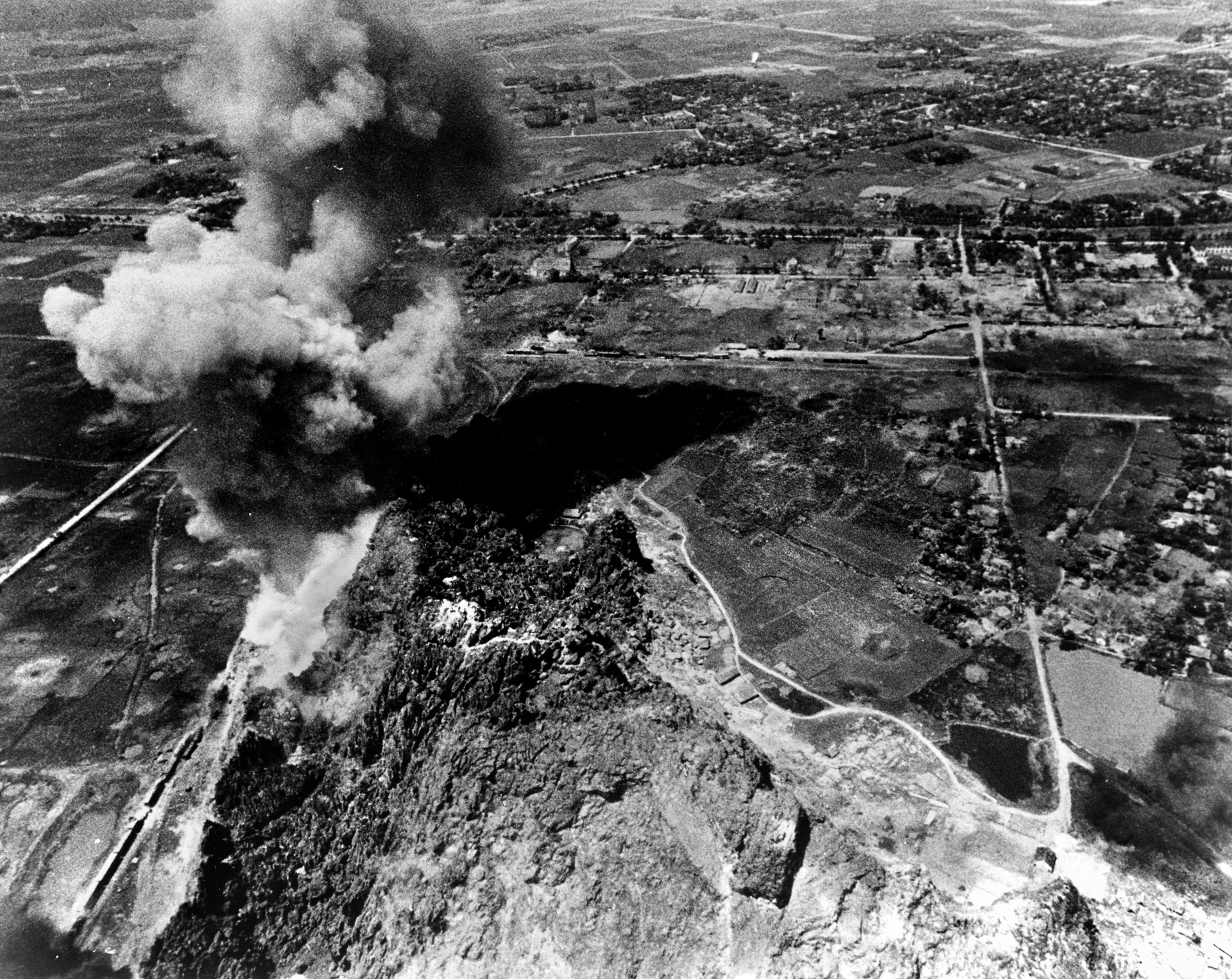
A short time later, the JCS and defense secretary forwarded a proposal for an eight-week bombing campaign against North Vietnam, to be known as Rolling Thunder, to U.S. President Lyndon Johnson for his approval. Johnson initially envisioned the operation as a strategic air campaign that would consist of “measured and limited air action.” The air strikes “might come about once or twice a week and involve two or three targets on each day of operation,” he said.
Senior military commanders responsible for air operations in Southeast Asia wanted Johnson to allow the two military services to conduct strikes against North Vietnamese factories, airfields, and command-and-control facilities in and around Hanoi and Haiphong, but Johnson initially saw an all-out air offensive as too heavy-handed an approach. With Johnson’s approval, the JCS issued orders for air strikes against selected military targets to begin on February 20; however, bad weather precluded the first strike from occurring until March 2.
What began as a short and limited air campaign would grow to become the longest strategic-bombing campaign ever undertaken by the U.S. military. Instead of lasting just two or three months, Operation Rolling Thunder eventually lasted almost four years.
Johnson hoped that a sustained bombing campaign, rather than tit-for-tat retaliatory strikes, would not only raise the morale of South Vietnamese forces, but also compel Hanoi to stop supporting the communist insurgency in South Vietnam overseen by the National Liberation Front. The NLF was a political organization whose goal was to overthrow the South Vietnamese government and reunify North and South Vietnam. NLF leaders issued orders to the Viet Cong to conduct an insurgency that would erode the military capability of South Vietnam and the will of its people.
Johnson and McNamara maintained a tight control over Operation Rolling Thunder throughout its long duration. When it failed to produce results in the short term, they gradually expanded the scope of the targets and prolonged the operation. The communist government in Hanoi, which was headed by North Vietnamese President Ho Chi Minh, repeatedly refused Johnson’s overtures to negotiate a peace settlement between the two Vietnams throughout the long bombing campaign.
The conveyance of the directions for the Rolling Thunder missions went through a long chain of command before they reached the air wings deployed in Southeast Asia. The civilian leadership and the JCS in Washington passed along their orders to Admiral U.S. Grant Sharp, the commander-in-chief of the United States Pacific Command, based in Honolulu, Hawaii. Sharp passed along instructions to the U.S. Air Force’s 2nd Air Division, which was headquartered at Tan Son Nhut Air Base near Saigon, and to the aircraft carrier strike force of Task Force 77 deployed at Yankee Station in the Tonkin Gulf. The top-level commanders in-theater then issued orders to the air-wing commanders.
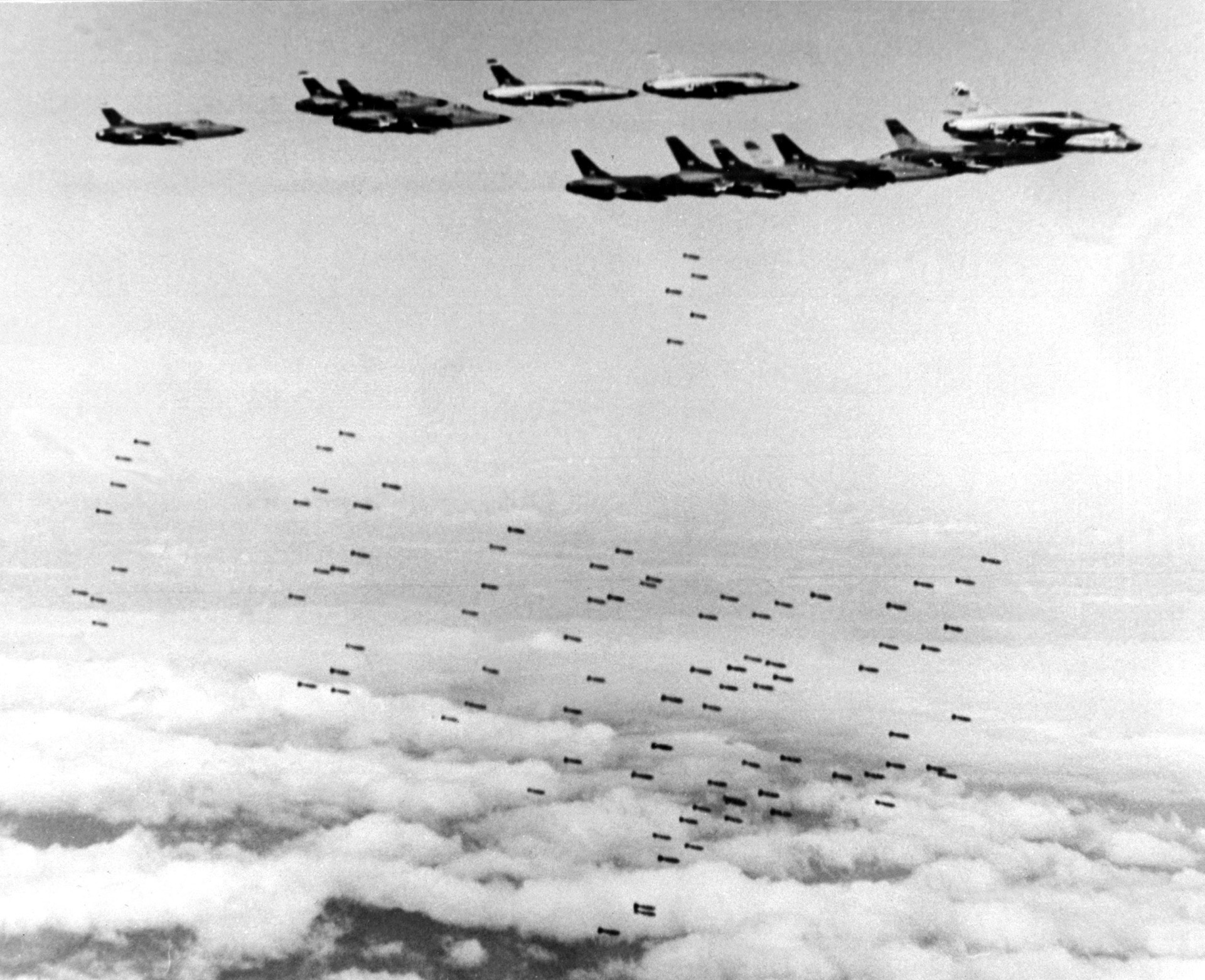
Admiral Sharp divided up the bombing responsibilities between the Air Force and Navy during the operation into route packages. The Air Force handled missions nearest the Thailand bases from which it flew—in route packages V and VIA—while the Navy took responsibility for route packages II, III, IV, and VIB on the coastal regions of North Vietnam, near where their aircraft carriers were deployed in the Tonkin Gulf. As for route package I, just north of the DMZ, that fell under the control of General William Westmoreland of the Military Assistance Command Vietnam, who ordered strikes directly above the DMZ to be conducted by U.S. aircraft based in South Vietnam.
The tropical weather in the panhandle of North Vietnam, where the air strikes of the first phase of Rolling Thunder were concentrated, frequently disrupted the schedules. During times of inclement weather, in-theater Air Force and Navy commanders directing the strikes were allowed to pick the best day of the week for the mission.
The Navy’s first alpha strike under Operation Rolling Thunder unfolded on March 15. The objective was the expansive North Vietnamese ammunition depot at Phu Qui, 100 miles south of Hanoi and 40 miles from the Laotian border. The mission involved 94 Navy aircraft, which launched from the carriers Ranger and Hancock at Yankee Station in the Gulf of Tonkin. The 64 A-4 Skyhawks and A-1 Skyraiders that constituted the strike package dove through heavy cloud cover into the teeth of heavy AAA fire to unleash their iron bombs and cannon fire on the complex’s 21 buildings. Eight F-8 Crusaders flew in advance of the bombers to suppress enemy AAA with rockets, while 20 other aircraft guarded the strike aircraft from MiG interceptors. Like the strike against Xom Bang, reconnaissance aircraft confirmed that three-quarters of the buildings had been destroyed.
Following approval from Johnson and McNamara, the Air Force and Navy conducted alpha strikes the week of March 26, in which they knocked out nine North Vietnamese radar installations. Some of the radar sites were easier to destroy than others; one of the toughest to knock out was the Bach Long Vi, better known to the Americans as “Nightingale Island,” 120 miles into the Gulf of Tonkin. The Nightingale Island radar facility, which was heavily defended by AAA batteries, gave the North Vietnamese early warning of Navy aircraft coming in for a strike from Yankee Station.
When 70 aircraft from the carriers Coral Sea and Hancock failed to knock out the main antenna on the first strike on March 26, the Navy sent 70 more aircraft against it three days later. This time, the Navy’s aircraft successfully destroyed the troublesome radar installation. Among the strike aircraft employed on the second sortie were six 35-ton A-3B Skywarriors from the Ranger’s heavy-attack squadron.
Commanders in-theater had to send requests for target approval up the chain of command all the way to Washington: The commanders of the U.S. Air Force’s 2nd Air Division in Saigon and the U.S. Navy’s Task Force 77 at Yankee station submitted recommendations for weekly targets to CINCPAC headquarters in Honolulu. Sharp’s staff then consolidated the requests and forwarded them to Washington. At that point, McNamara, and National Security Advisor McGeorge Bundy, and Johnson himself conferred over the recommendations and decided which to approve.
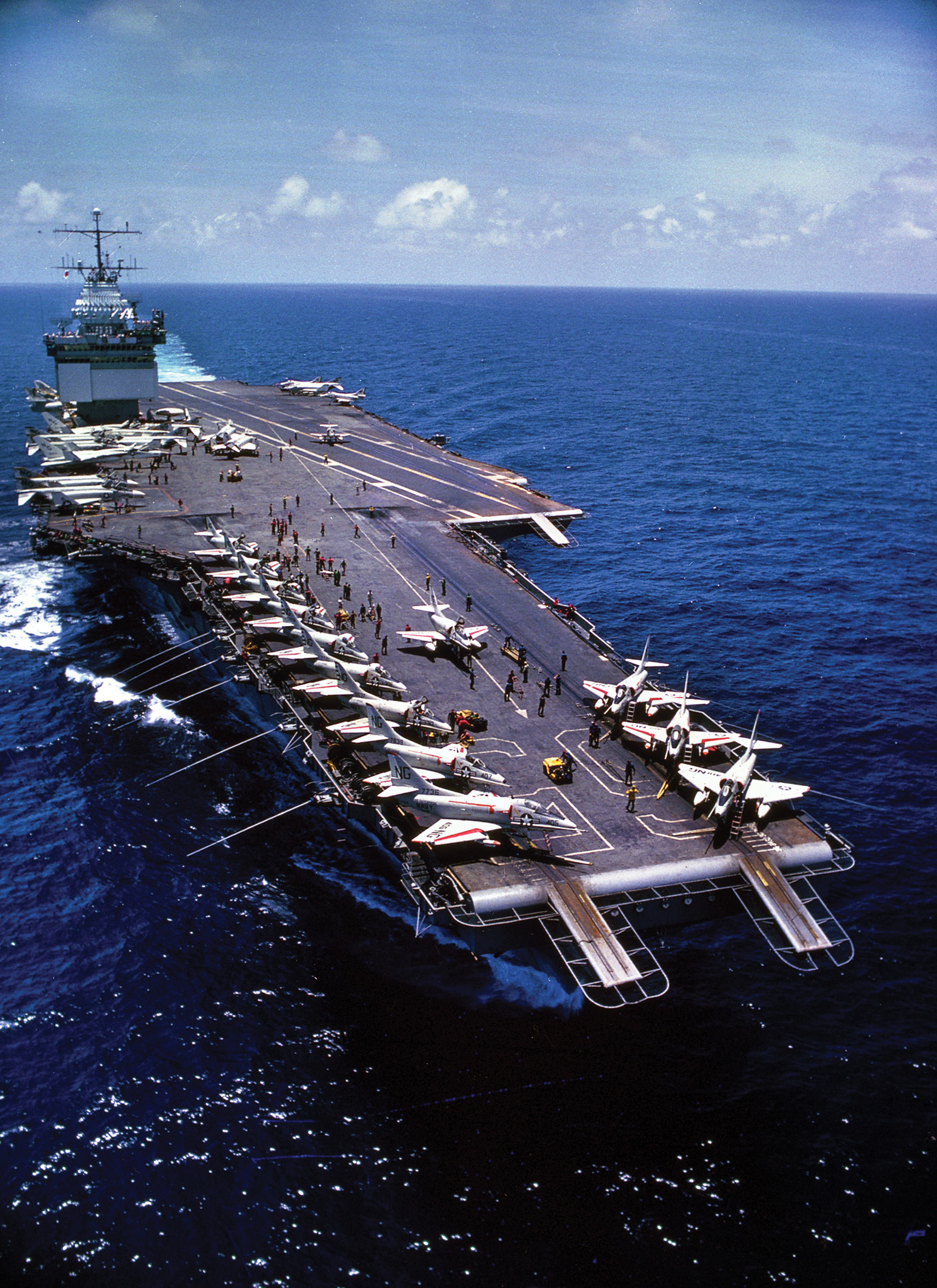
For its strike packages, the Air Force primarily used the F-105 Thunderchief, F-100 Super Sabre, and F-4 Phantom. As for the Navy, it conducted alpha strikes mostly with A-1 Skyraiders, A-4 Skyhawks, A-6 Intruders, and F-8 Crusaders. In addition to the alpha strikes, U.S. aircraft also conducted secondary armed-reconnaissance missions against other authorized targets.
Phase one took place from March 1965 and lasted through May 1965. During this time, Air Force and Navy aircraft targeted ammunition dumps, barracks, and radar sites. On April 1, the air commands received instructions also to target rail and transport networks. These attacks were initially confined to targets below the 20th parallel in the North Vietnamese panhandle to avoid civilian casualties in the more densely populated northeastern part of the country.
In the first week of April 1965, the Air Force and Navy carried out dramatic attacks against railway and highway bridges that were major choke points on the North Vietnamese supply line. Sixty-two Navy aircraft attacked the Dong Phoung Thoung railway and highway bridge near Thanh Hoa on April 2. They dropped 184 bombs and fired 2.75 folding-fin aerial rockets. Reconnaissance aircraft confirmed that they succeeded in destroying the center span.
The following day, 46 1F-105Ds and 21 F-100Ds participated in an alpha strike against the Thanh Hoa Bridge, known as the Dragon’s Jaw, which spanned the Song Ma. They used 250 lbs., Bullpup air-to-surface missiles, and 750 lb. general-purpose bombs but failed to inflict any tangible damage to the structure. A follow-up attack by the Air Force on April 4 resulted in light damage.
The Bullpup, one of the earliest precision-guided weapons, was guided by the pilot with a joystick. The Bullpup was used by air crews flying a variety of aircraft, including A-4, F-100, F-4, F-8, A-6, and F-105. The pilot guided the Bullpup manually to target using a small toggle in the cockpit. It marked an important milestone in precision missiles, even though it was only accurate to within 33 feet of its target. But pilots disliked having to manually guide the missile to target because it required more time over the target, which meant greater exposure to flak and the threat of surface-to-air missiles.
Both military services found it almost impossible to heavily damage or destroy major bridges with unguided conventional bombs. The Air Force tried throughout Operation Rolling Thunder to knock out the Thanh Hoa Bridge and never succeeded. The bridge would not be destroyed until laser-guided bombs were available during Operation Linebacker II in 1972.
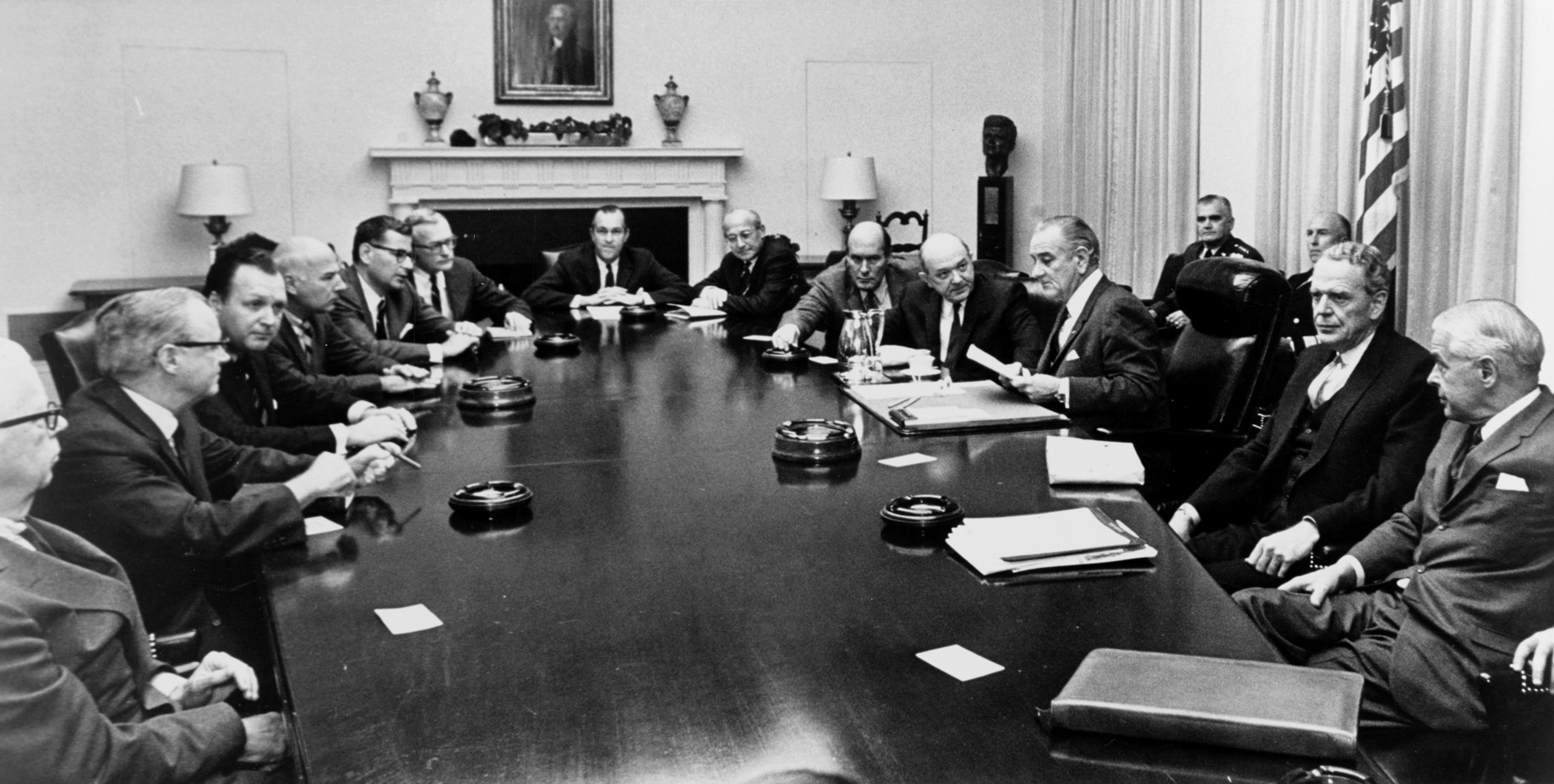
Sharp advocated extending the bombing campaign north of the 20th Parallel after just three weeks of alpha strikes in order to cripple North Vietnam’s logistics and transportation networks. He also wanted permission for Navy aircraft to bomb the port facilities at Haiphong and major industrial plants on the outskirts of Hanoi. McNamara categorically rejected Sharp’s accelerated schedule.
The admiral clashed frequently with McNamara, who he believed was sabotaging the success of the strategic-bombing campaign. McNamara “consistently discarded the advice of his military advisers [and] gave the enemy plenty of time to cope with our every move,” Sharp said.
The members of the JCS had a better handle on what might be acceptable to Johnson, McNamara, and Bundy. They recommended to McNamara on March 22 a 12-week bombing campaign that would restrict strikes to lines of communication, supply routes, and choke points (i.e., bridges and ferries) south of the 20th Parallel.
While the Americans negotiated among themselves regarding rules of engagement, the North Vietnamese consistently improved their air-defense networks. At the start of the conflict in 1964, before the U.S. began its sustained strategic-bombing campaign, North Vietnamese air defenses consisted of 1,425 light, medium, and heavy AAA guns. These included 12.7mm and 14.5mm heavy machine guns, rapid-fire 37mm and 57mm light cannon, and even some radar-guided 85mm and 100mm heavy flak guns. The North Vietnamese radar inventory at that time included 22 early-warning radars and four fire-control radars.
Although North Vietnam lacked a well-integrated air-defense network in 1964, the communist country’s air defenses would undergo a dramatic improvement with the enthusiastic and generous support of the Soviet Union. Russian General Secretary Leonid Brezhnev, who came to power in October 1964, was a steadfast supporter of the North Vietnamese government. The Soviet Union supplied one billion dollars’ worth of MiGs, SAM launchers and missiles, and radar equipment to North Vietnam.
By the start of Rolling Thunder in March 1965, North Vietnam had increased the number of its AAA sites to 5,000. The first 70 SAM launchers arrived in North Vietnam in April 1965. By the end of 1965, North Vietnam boasted a dynamic air-defense network consisting of AAA batteries, SAM sites, and MiG interceptors. Although the North Vietnamese initially had to get by with subsonic MiG-15 and MiG-17s, they eventually received MiG-21s from the Soviet Union.
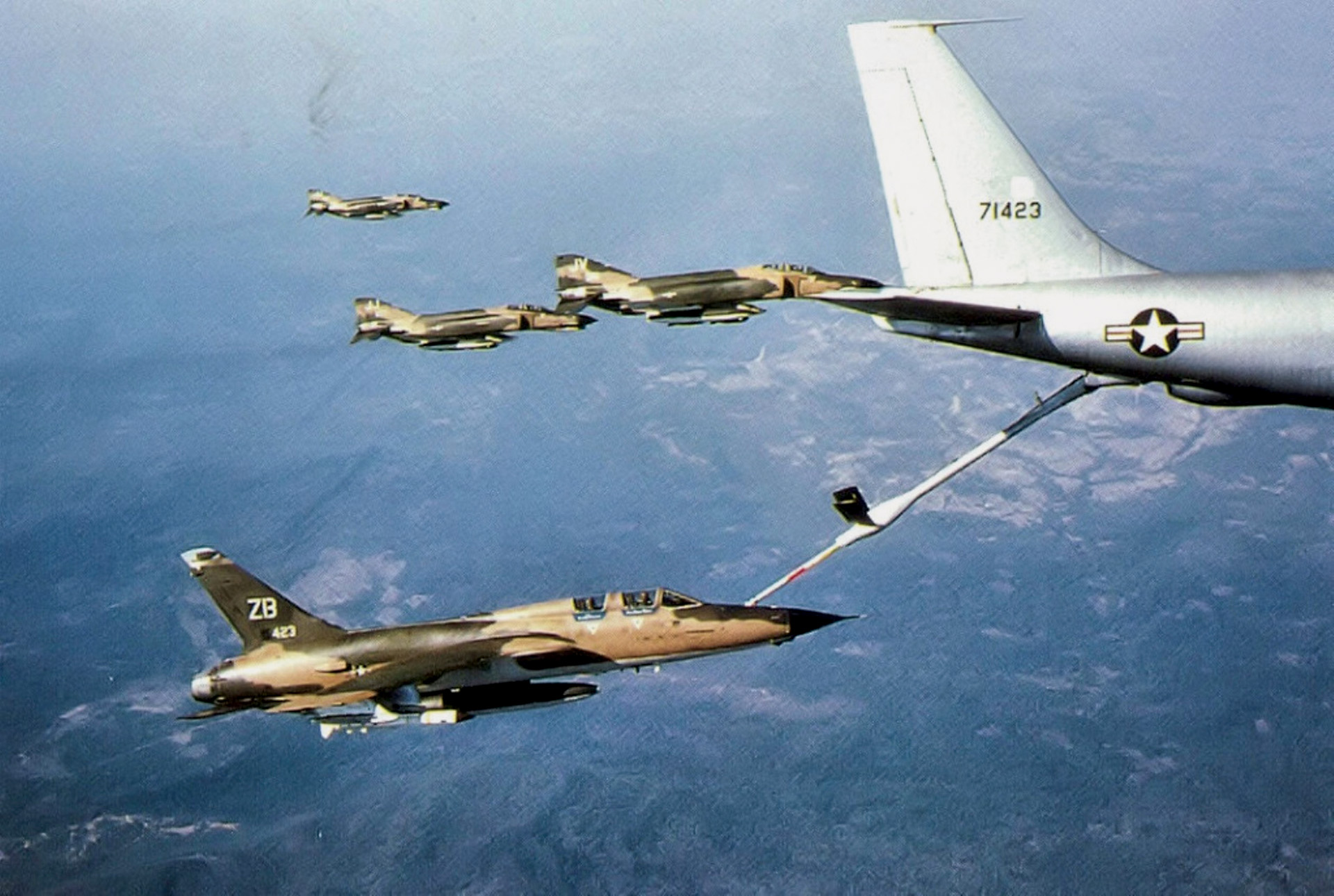
Soviet-supplied SAMs posed a deadly and terrifying threat to U.S. aircraft pilot. The first SA-2 Guideline, also known as the S-75 Dvina, SAM systems arrived in Hanoi in May 1965. The S-75 was a 35-foot-long missile that could strike targets 17 miles away. If a SAM missile detonated within 20 feet of an aircraft, it could bring it down.
SAM sites were hard to find and difficult to destroy. While under construction, they were off-limits to American pilots under U.S. rules of engagement, but once they were active, they could be attacked and destroyed. SAMs were most dangerous to U.S. aircraft flying at 20,000 feet or higher; however, if the aircraft flew under 20,000 feet, they were more vulnerable to a barrage of AAA fire.
When the People’s Army of Vietnam received its first SAMs, it went to work immediately training its technicians in the Red River Delta to use the systems with the assistance of Soviet advisors. The North Vietnamese, as might be expected, deployed the majority of their air-defense resources around Hanoi and Haiphong in the Red River Delta, where most of their industry was located. This area became “the center of Hell with Hanoi as its hub,” wrote Colonel Jack Broughton, an Air Force F-105 flight leader.
The North Vietnamese typically deployed four or six SAM mobile launchers in a circle around the Spoon Rest radar unit and a Fan Song control van. Each mobile SAM launcher required five crewmen. The Fan Song was a trailer-mounted fire-control, tracking, and fire-director radar. The launchers pointed outwards and were protected by an earthen berm. The truck-mounted Spoon Rest search radar acquired the target and passed its range, bearing, and altitude to the Fan Song guidance radar, which had the capability to simultaneously track six targets. The Fan Song control van housed the three radar operators, one controller, and a battery commander.
Two Air Force pilots of an F-4 Phantom were the first victims of a SAM battery on a mission over North Vietnam. The North Vietnamese SAM crews fired three missiles, one of which exploded beneath the aircraft’s wing. Captain Richard P. Keirn and weapons-systems officer Captain Roscoe H. Fobair were part of a flight of four F-4s furnishing top cover for F-105 Thunderchiefs bombing a weapons production facility northwest of Hanoi on July 24, 1965. Although Fobair was killed, Keirn ejected and was captured.
The North Vietnamese took full advantage of the restrictive U.S. rules of engagement, which prohibited Wild Weasel formations, in which specially modified attack aircraft targeted SAM sites, from attacking SAM batteries in Hanoi and Haiphong, as well as in the Johnson administration’s off-limits buffer zone on the frontier of Communist China. The communists deliberately deployed some of the SAMs defending those two major cities right in their downtown areas to avoid the Wild Weasel strikes.
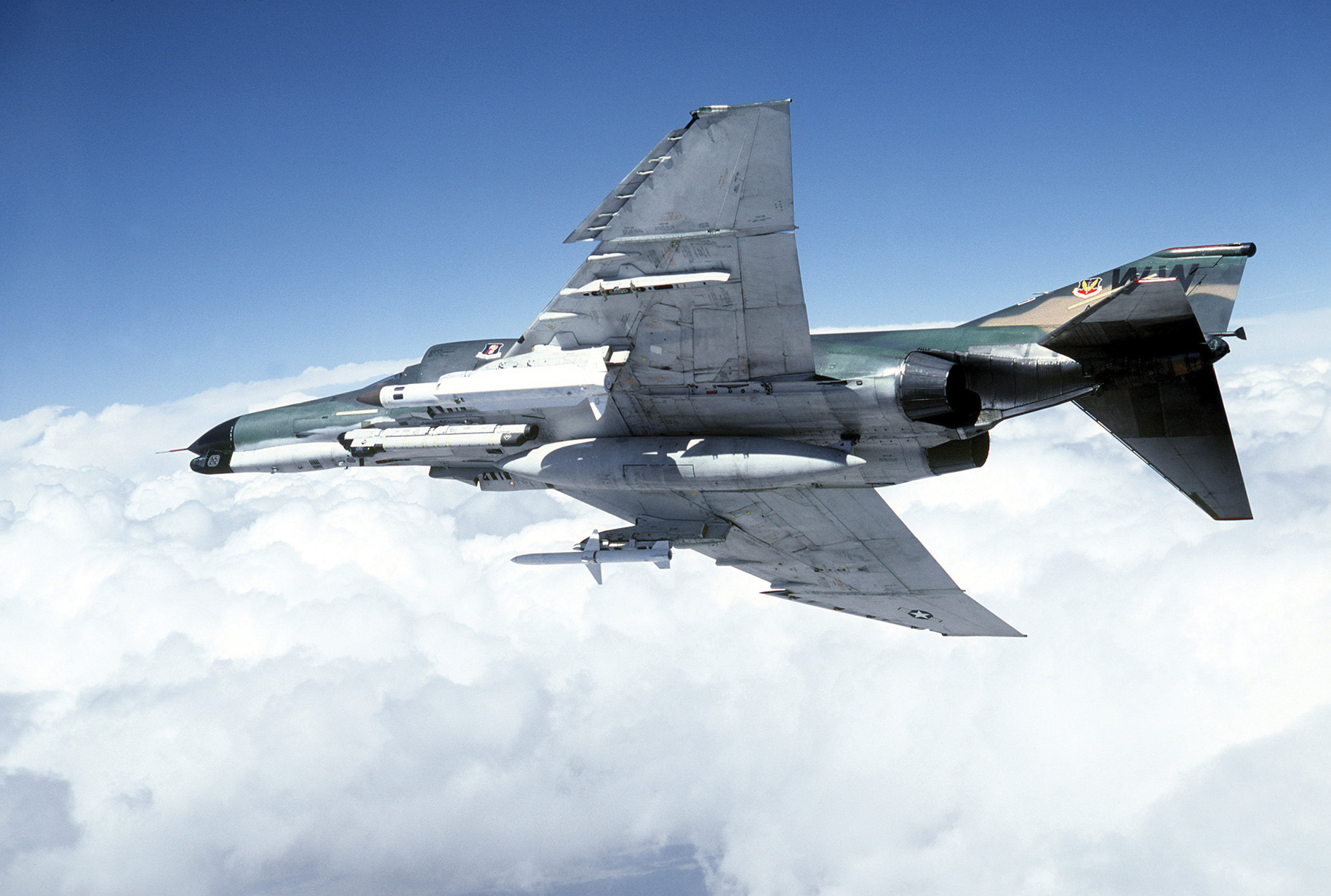
By the end of 1965, the Air Force and Navy aircraft had flown a total of 25,408 sorties as part of Rolling Thunder. During those sorties, the Air Force and Navy lost a total of 170 aircraft to North Vietnamese air defenses. Of those losses, 50 were the result of MiG interceptors and the remainder from AAA and SAMs.
The limited nature of the Operation Rolling Thunder campaign was designed to force the North Vietnamese into concessions at the peace table while avoiding acts that might have triggered an intervention by communist China. With that goal in mind, Johnson periodically ordered a bombing halt, at which time the United States would diplomatically approach North Vietnam.
Johnson called a five-day halt to the bombing on May 12, 1965, in the hope that the North Vietnamese were ready to negotiate, but Ho Chi Minh remained defiant. They North Vietnamese, who enjoyed the support of the Soviet Union and China, had no intention of negotiating.
Johnson and his closest advisors authorized an expansion of Rolling Thunder in June 1965 that marked a strategic shift in the air campaign. In this second phase, Air Force and Navy strike aircraft would also strike transportation and infrastructure targets. In early December 1965 Johnson began allowing strikes against selected industrial targets in the vicinity of Hanoi, as well.
The North Vietnamese Air Force enhanced its interception capabilities in January 1966 when it received its first batch of MiG-21s “Fishbeds” from the Soviet Union. For the most part, though, U.S. fighter pilots deemed the nimbler subsonic MiG-17 “Fresco” a greater threat than they did the MiG-21. This was because the MiG-21 suffered from numerous design flaws; for example, it had an unstable gunsight, its single cannon held only 60 rounds of ammunition, it lacked self-sealing fuel tanks, and it did not have enough armor to protect its most vital components. Nevertheless, the MiG-21 was armed with the highly accurate, heat-seeking Atoll missile.
While flights of MiG-17s would make hit-and-run attacks in which they would fire one or two missiles before streaking away, MiG-21s used a different tactic: To evade F-4 Phantom radar, MiG-21s often approached U.S. aircraft formations at low altitude. They would then pop up behind the formation. The Fishbed pilots would then roar through the American formation at Mach 1., firing a single missile before flying off. Although these pop-up attacks might not generate many kills for the North Vietnamese, the threat they posed often compelled U.S. pilots carrying bomb loads to jettison their ordnance before reaching their intended targets.
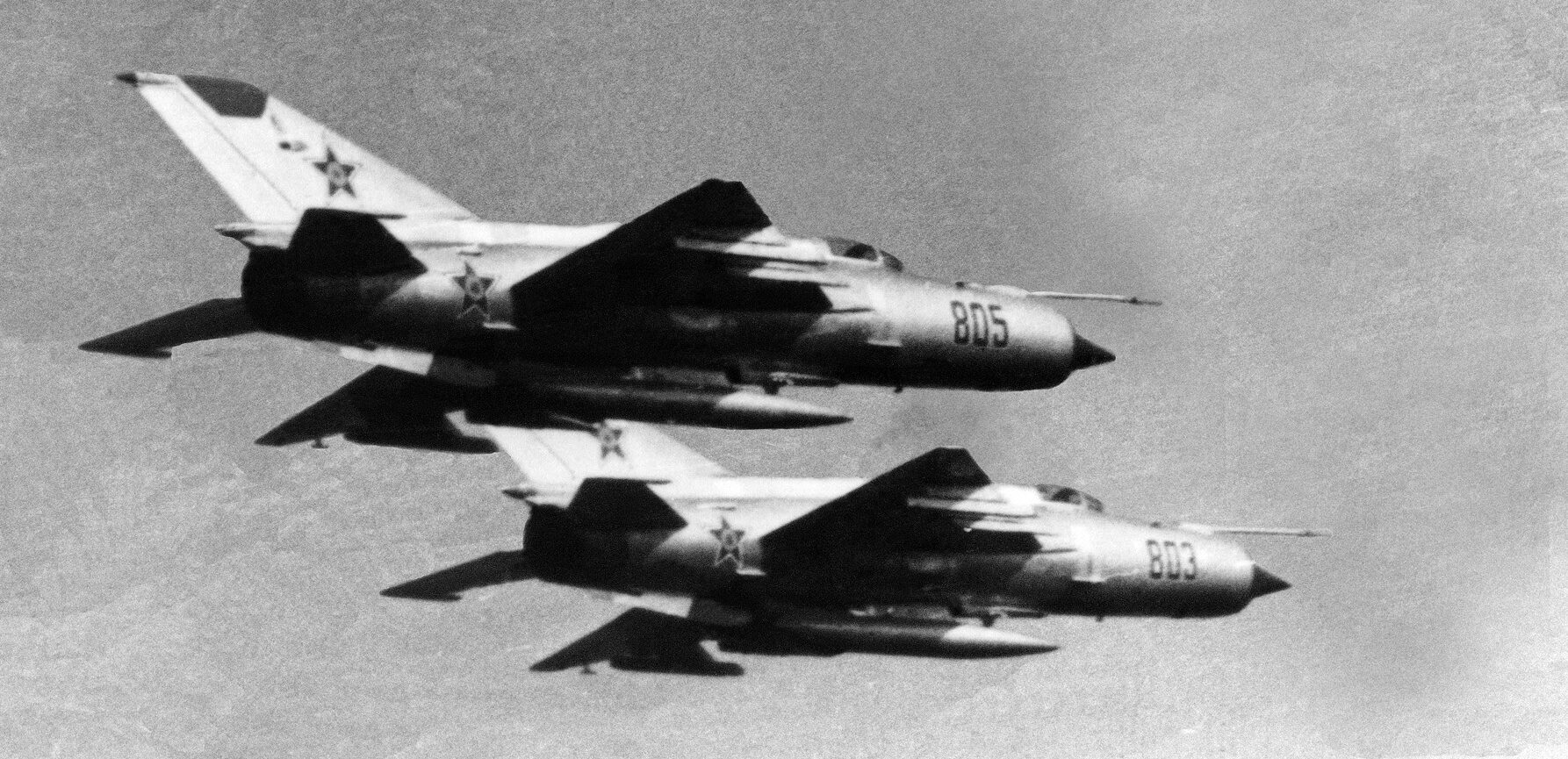
As for air-to-air combat against the MiG interceptors, the principal fighter aircraft for both services was the F-4 Phantom, although the Navy also relied heavily on the F-8 Crusader for combat air patrol. Originally designed for the U.S. Navy, the Phantom was eventually built for the Air Force, as well. Early on, air crews of the two-seater F-4 Phantom had to engage MiGs with either AIM-7 Sparrow or AIM-9 Sidewinder air-to-air missiles because the Phantom lacked a minigun for close-in dogfighting. But this deficiency was corrected with the deployment of the F4-E version in 1968, which came equipped with an autocannon. As for the F-8 Crusader, it was hailed as the “Last of the Gunfighters” because it was equipped with four 20mm autocannons housed in its lower fuselage.
To further protect U.S. formations against MiG interceptors, the U.S. military deployed two EC-121D “Warning Star” early-warning and control aircraft to the Gulf of Tonkin in April 1965. Another EC-121D was deployed shortly afterwards to the skies over Laos to protect U.S. Air Force aircraft flying from Royal Thai airfields against targets in North Vietnam.
Three carriers were always on the line as part of the U.S. Seventh Fleet’s Task Force 77 at Yankee Station during Operation Rolling Thunder. A carrier would serve a six-month tour of duty at Yankee Station and then be replaced by another carrier. Altogether, 14 carriers served at Yankee Station at various times during the Vietnam War.
The Navy was able to bring the full weight of its air power against North Vietnam partly because, unlike the Air Force, it did not have to commit as many of its air assets to supporting U.S. and South Vietnamese ground troops in South Vietnam. In December 1965, the Navy deployed the nuclear-powered carrier Enterprise, the largest warship in the world at the time, to Yankee Station in the Tonkin Gulf. At that time, the Enterprise joined the Kitty Hawk and Ticonderoga. The Enterprise set a record for most carrier-launched sorties in a single day when it sent 165 aircraft aloft on December 3, 1965.
Still determined to bring the North Vietnamese to the peace table, Johnson on December 24 ordered another bombing halt. This time it lasted 37 days, until January 31, 1966. The North Vietnamese, though, continued to rebuff U.S. peace overtures. The long bombing halt allowed the North Vietnamese to move men and equipment without fear of attack from the air. Additionally, the long bombing hiatus allowed them to continue to improve their air defenses.
In the third phase of Rolling Thunder beginning in February 1966, Johnson expanded the scope of the operation to include attacks on petroleum, oil, and lubricant (POL) storage facilities. Because nearly all of North Vietnam’s POL storage facilities were located near Hanoi and Haiphong, U.S. aircraft had fly into the teeth of the communist country’s air defenses. The Air Force 355th and 388th Tactical Fighter Wings, as well as Carrier Air Wing 9 on the Constellation and Carrier Air Wing 14 on the Ranger began conducting POL alpha strikes on June 29. Although Sharp urged Johnson and McNamara in summer 1966 to authorize attacks against the North Vietnamese airfields at that time, the president would not authorize attacks against MiG airfields until spring 1967. After that, the North Vietnamese moved most of their MiGs to Chinese airfields, from which they continued their attacks against U.S. aircraft formations.
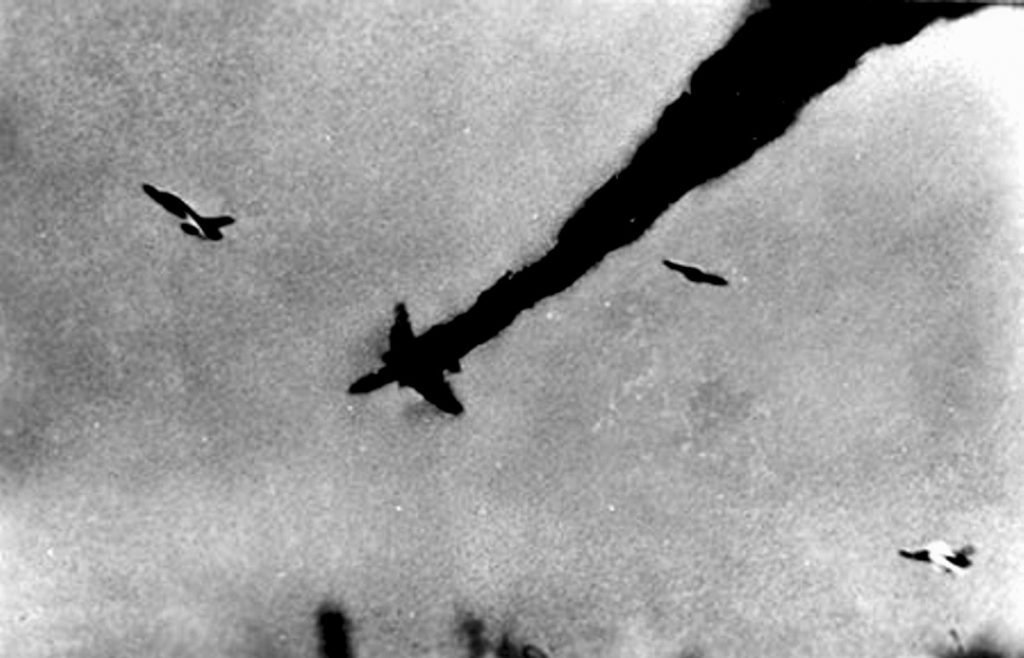
Another method for U.S. forces to interdict the flow of supplies from North Vietnam to South Vietnam was to have B-52 Stratofortresses conduct strikes, codenamed “Arc Light,” by which they saturated an area with conventional bombs. The first of the Arc Light strikes on North Vietnamese territory occurred on April 12, 1966, when Strategic Air Command B-52s hammered Mu Gia Pass, the principal point of entry from North Vietnam onto the Ho Chi Minh Trail. Johnson restricted the use of the B-52 in North Vietnam to the staging points of the Ho Chi Minh Trail and to the panhandle north of the DMZ.
In phase four, from October 1966 to May 1967, the Johnson administration increased the pace at which it bombed industrial facilities and power-generating plants. Whereas there were only five attacks on power plants in 1965, the Air Force and Navy struck such targets 39 times in 1967. The fifth and final phase—from May 1967 through October 1968—focused on what remained of North Vietnam’s industrial infrastructure. The Air Force and Navy also continued to bomb all of the military, logistics, and transportation targets that the Johnson administration had previously approved.
McNamara came out strongly against Operation Rolling Thunder as early as autumn 1966. The air campaign had not “significantly affected infiltration [of South Vietnam] or cracked the morale of Hanoi,” he told Johnson. McNamara wanted a different approach to interdicting the flow of supplies from Hanoi to the Viet Cong and North Vietnamese forces fighting on the ground in South Vietnam.
The secretary of defense proposed a new approach to interrupting the flow of men and materiel from North Vietnam into South Vietnam in November 1966. He proposed a physical barrier that would run along the DMZ and into northern Laos. This barrier would consist not only of physical barricades, but also of an electronic sensor field. When there was evidence of a major threat from North Vietnamese ground forces, he proposed having quick reaction forces engage them.
As for the continued bombing of North Vietnam, McNamara sought a stabilized level of bombing rather than the continuing escalation characteristic of Operation Rolling Thunder. Not surprisingly, the senior military officials vehemently objected to McNamara’s attempt to limit the scope of the bombing.
McNamara became even more entrenched in his opposition to Rolling Thunder in the months that followed. In spring 1967 he went so far as to come out against any further bombing of North Vietnam. Wheeler and Westmoreland immediately decried the defense secretary’s proposed curtailment of tactical and strategic air strikes against targets inside North Vietnam. Westmoreland went so far as to tell Johnson that he was appalled that the administration would even consider halting Rolling Thunder.
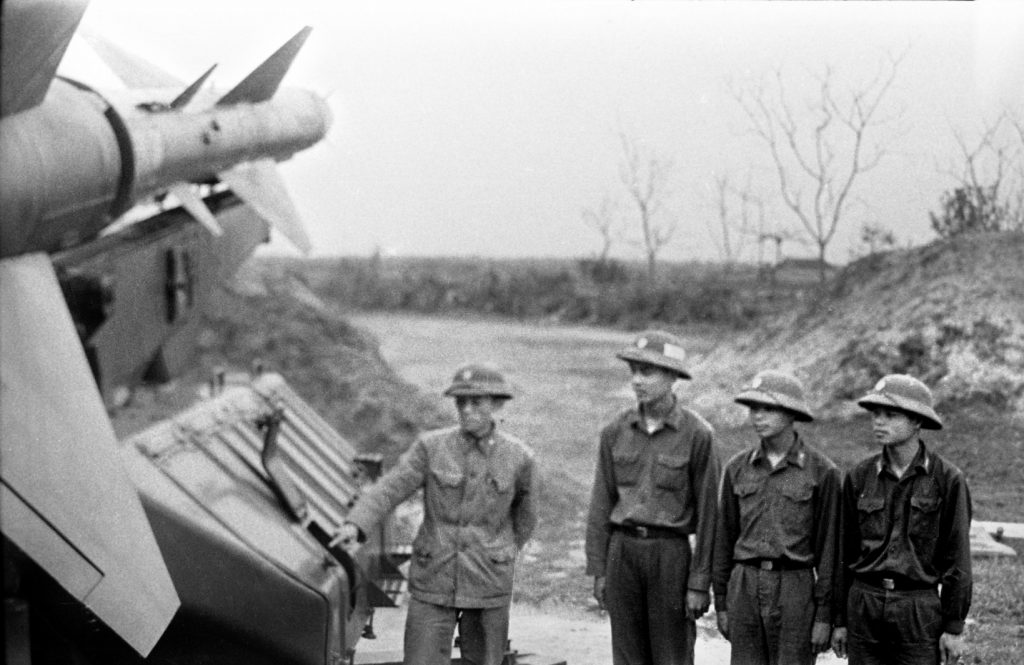
But by that time, Johnson was questioning the entire war effort himself. When the CIA told Johnson in 1968 that Operation Rolling Thunder had neither decreased North Vietnam’s morale nor its war capabilities, the president began to doubt whether he could bring the war to a successful conclusion.
McNamara tendered his resignation on November 28, 1967, although he stayed on through February 28, 1968. Arguably the most egregious of McNamara’s decisions during Operation Rolling Thunder were his prohibitions against attacking SAM sites under construction and his refusal to allow the bombing of airfields at the start of the conflict.
Despite the political turmoil, by October 1967 Air Force and Navy planners had begun to hit the North Vietnamese where it hurt with attacks against high-priority military targets such as MiG airfields. An attack against Kien An Airfield by Carrier Air Wing 19 flying from the Ticonderoga involved A-4 and F-8 fighter-bombers, F-8 Iron Hand Escorts to suppress the SAMs, F-8s to suppress the conventional flak batteries, and other F-8s to fly target combat air patrol against MiG interceptors.
Johnson’s announcement on March 31, 1968, that he would not run for re-election ultimately doomed Rolling Thunder. The Vietnam War had escalated throughout his presidency, and he had proven unable so far to get the North Vietnamese to engage in peace talks. Moreover, the bloody and chaotic Tet Offensive, which had erupted on January 31 and in which the North Vietnamese and Viet Cong had launched a series of attacks on over 100 cities and outposts across South Vietnam, had shown that the United States was not winning the war with its current ground and air strategies. As the Johnson administration wound down, Rolling Thunder drew to its inevitable close on October 31, 1968.
At the conclusion of the 43-month strategic-bombing campaign, Air Force and Navy officials overseeing the air strikes said they believed that the most effective phases of the operation were those in 1967 and 1968 that targeted North Vietnam’s logistics and infrastructure.
One of the most devastating consequences of Operation Rolling Thunder for the U.S. military was the large number of pilots who became prisoners of war in Hanoi. Over the course of the entire conflict, 771 Americans became POWs. Of those, 113 died in captivity; 65 were tortured to death as their interrogators sought to gain their cooperation for propaganda purposes. These POWs endured horrific, barbaric conditions without medical care.
Over the course of the 43-month operation, U.S. airmen flew 304,325 tactical sorties in which they dropped 643,000 tons of ordnance. In addition, the Strategic Air Command flew 2,273 Arc Light missions. Yet the Rolling Thunder sorties constituted only 28 percent of all air strikes flown during the period when the number of sorties conducted in South Vietnam and Laos are taken into account.
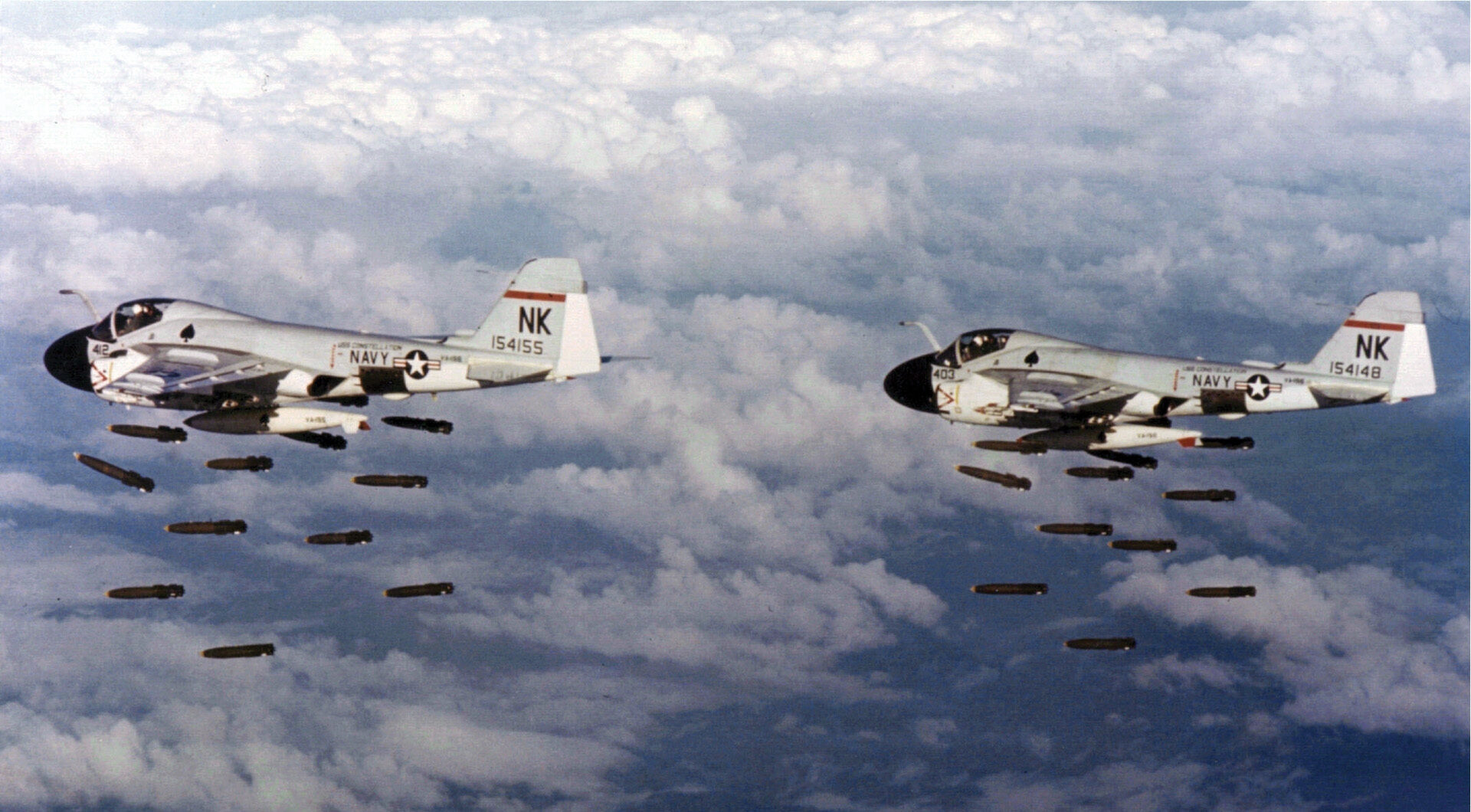
Rolling Thunder had built up considerable momentum in 1966, but it truly peaked in 1967. During that year, the Air Force and Navy bombed 1,923 AAA sites, 236 SAM sites, 807 bases and airfields, 140 POL targets, 39 power plants, and 6,485 trails and roads.
Altogether, U.S. military forces in Vietnam lost 881 aircraft over the course of the operation. Using 1967 as an example, of the 372 aircraft lost that year, 205 were lost to conventional AAA fire, 62 to surface to air missiles, 25 to MiG interceptors, and 37 to pilot error, mechanical breakdown, and unknown causes.
Despite the interference of Johnson, McNamara, and many of the president’s other top advisors, the aircrews who conducted the alpha strikes and armed reconnaissance attacks showed extraordinary heroism and ingenuity in the face of a tightly woven fabric of air defenses constructed by the North Vietnamese with the assistance of the People’s Republic of China and the Soviet Union.
Although U.S. aircrews successfully bombed their target objectives throughout Operation Rolling Thunder, their efforts had little long-term effect on the course of the war. As a testament to their proficiency, these airmen succeeded in knocking out 65 percent of North Vietnam’s fuel-storage capacity at the peak of the long war.
Operation Rolling Thunder had a lasting and positive influence not only on air operations conducted during the Nixon administration, such as Linebacker II, but also on U.S. air doctrine in future conflicts. The legacy in terms of tactical and military innovations is impressive. The U.S. military experienced dramatic advances in technology in the years immediately following Operation Rolling Thunder. The most notable of these was the introduction of the highly accurate precision munitions known as “smart bombs.” By the early 1970s, the U.S. was using Paveway laser-guided bombs in the skies over Indochina. The widespread use of smart bombs greatly improved the number of targets an aircraft or strike force could destroy on an air mission. After the war, the U.S. military also stepped up its research-and-development efforts in electronic warfare, infrared sensors, and anti-radar missiles.
Rolling Thunder ultimately led to beneficial changes in U.S. air strategy. The U.S. Air Force moved away from its Cold War obsession with developing long-range bombers toward a more balanced fleet of aircraft that included more tactical bombers. This enabled both the U.S. Air Force and U.S. Navy to make great strides in improving their air-to-air combat capabilities in the post-Cold War era. The U.S. military also began fielding stealth aircraft in the post-Vietnam era, which were far less vulnerable to AAA and SAM batteries than their Vietnam forerunners.
Advances in these areas, as well as a new-found willingness among post-Vietnam-era U.S. presidents to allow senior military officials to manage strategic and tactical air strikes with little interference, led to great achievements. These technological and doctrinal changes in the application of U.S. airpower were on full display in Operation Desert Storm, which was the first major test of U.S. forces after the Cold War.

